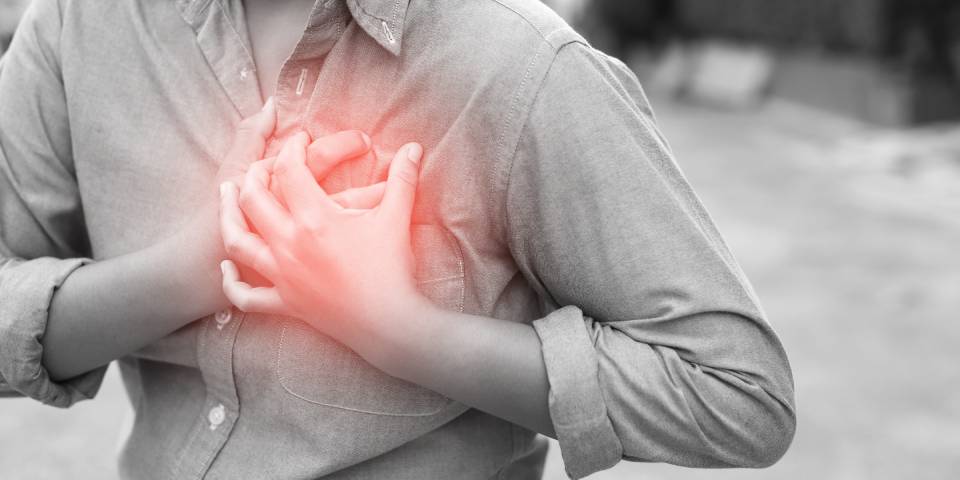Silent heart attacks may not always show obvious signs, making them a concerning threat to heart health. However, by staying informed and taking proactive steps, we can reduce their impact. Dr. Kartik Bhosale highlights the significance of regular check-ups, adopting a heart-healthy lifestyle, and recognizing risk factors to prevent and manage silent heart attacks. Detecting and addressing these issues early on is crucial for a healthier heart and a longer, more satisfying life.
Let’s See More About Silent Heart Attack
What Is Silent Heart Attack?
A “silent heart attack,” also recognized as a silent myocardial infarction (MI) or silent ischemia, represents an unusual type of heart attack. Unlike the typical heart attack, characterised by prominent symptoms such as intense chest pain, breathlessness, and excessive perspiration, a silent heart attack transpires without these conspicuous warning signs.
Instead, during a silent heart attack, the person may not feel these classic symptoms or might only have mild, less typical ones that can easily be mistaken for other health concerns.
Symptoms of Silent Heart attack:
Silent heart attacks earned their name because they often happen without the usual, easily recognizable symptoms that come with a standard heart attack. Nevertheless, certain individuals might still notice mild or unusual signs that could hint at a silent heart attack.
These indicators can include:
- Chest Discomfort: While less intense than the chest pain in a regular heart attack, some individuals might feel chest discomfort, pressure, or a squeezing sensation during a silent heart attack.
- Fatigue: You may notice an uncommon and overpowering sense of tiredness that’s challenging to clarify.
- Burning Sensation: Some people may feel a burning sensation in the upper abdomen or lower chest, and this sensation can be confused with indigestion or heartburn.
- Feeling Queasy and Vomiting: You could experience a sense of queasiness or have episodes of vomiting, though it might not be as severe as what’s usually linked to a typical heart attack.
- Discomfort in Neck, Jaw, or Back: You might occasionally notice pain in your neck, jaw, or back, which could be associated with a silent heart attack.
- Feeling Dizzy or Lightheaded: Some people may encounter sensations of dizziness or lightheadedness.
Risk Factors:
- Age: The risk of a silent heart attack goes up as you get older, especially after reaching 65.
- Gender: Men are generally more susceptible to silent heart attacks than women.
- Family History: If heart disease or heart attacks run in your family, your risk is higher.
- Smoking: Lighting up significantly increases your chances of experiencing both silent and traditional heart attacks.
- High Blood Pressure: Elevated blood pressure, known as hypertension, stands as a prominent risk factor for heart disease, including silent heart attacks.
- High Cholesterol: Having high levels of LDL cholesterol, often referred to as “bad” cholesterol, can play a role in the formation of coronary artery disease.
- Obesity: Carrying additional weight places added strain on the heart, raising the risk of heart disease.
- Diabetes: Individuals with diabetes are at a higher risk of heart disease, which can include silent heart attacks.
- Stress: Prolonged stress can have adverse effects on heart health and might contribute to heart disease.
Silent Heart Attack Treatment Option:
- Medications: Healthcare professionals may recommend drugs to prevent blood clots, manage blood pressure, reduce cholesterol levels, and relieve symptoms. Some commonly used medications in these situations include aspirin, beta-blockers, ACE inhibitors, and statins.
- Heart Procedures : In specific situations, doctors may recommend procedures to treat blockages in the coronary arteries. These procedures can involve angioplasty with the placement of a stent to widen narrowed arteries or coronary artery bypass surgery to establish new pathways for blood flow.
- Cardiac Rehabilitation: These programs, known as cardiac rehabilitation, provide individuals with structured exercise routines and educational support to help in their recovery from a heart attack and reduce the risk of future heart problems.
Prevention:
- Take Charge of Your Health: Collaborate with your healthcare provider to manage and address risk factors such as high blood pressure, high cholesterol, diabetes, and obesity. Their guidance may involve suggesting medications and adjustments to your daily habits.
- Quit Smoking: If you smoke, quitting is one of the most effective steps you can take to lower your risk of heart disease, including silent heart attacks.
- Eat Heart-Healthy: Opt for a diet that promotes heart health, featuring plenty of fruits, vegetables, whole grains, lean proteins, and low-fat dairy products. Be mindful of saturated fats, trans fats, salt, and added sugars in your diet.
- Stay Active: Make physical activity a part of your daily life. Strive to follow health guidelines by aiming for at least 150 minutes of moderate-intensity exercise or 75 minutes of vigorous-intensity exercise each week.
- Manage Stress: Find healthy ways to manage stress, such as relaxation techniques, meditation, mindfulness, or engaging in hobbies and activities you enjoy.







